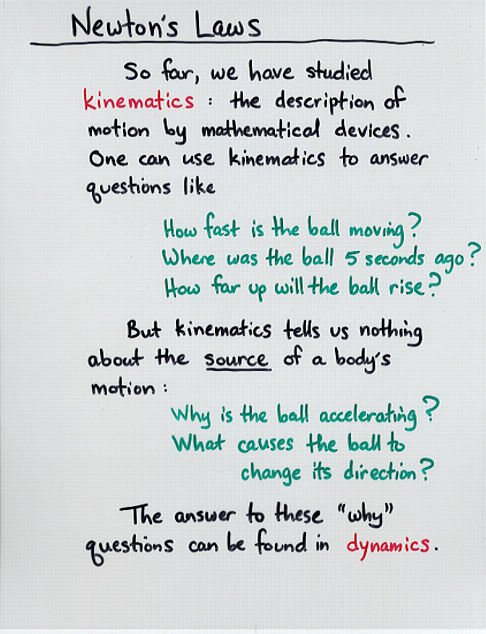
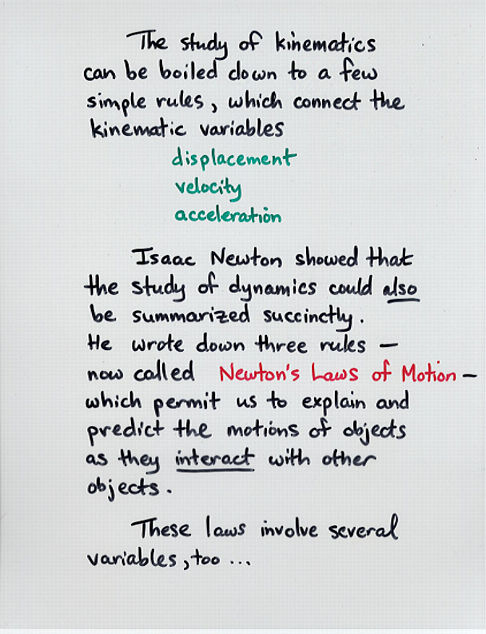
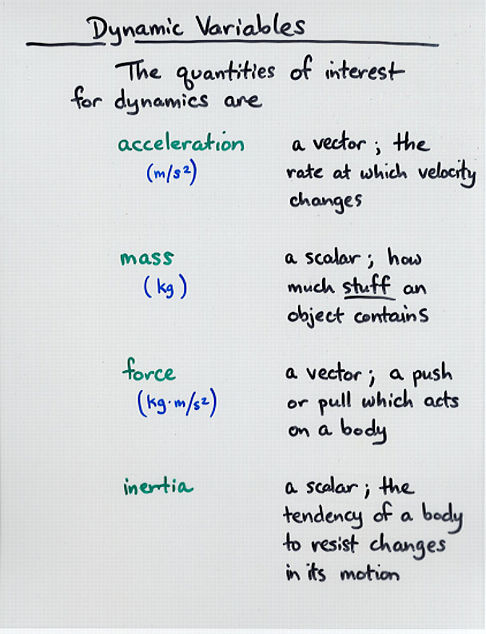
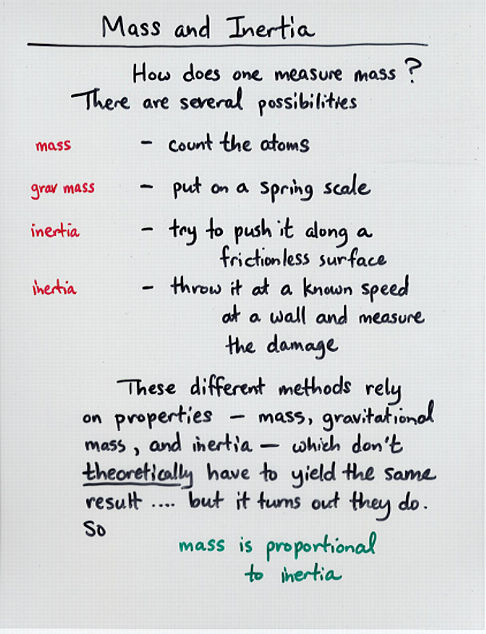
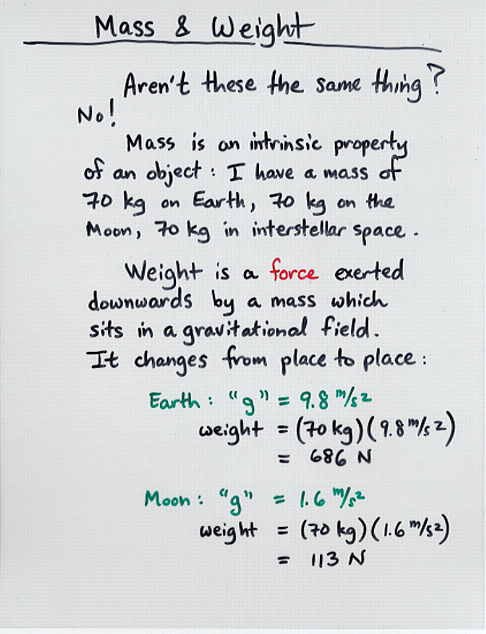
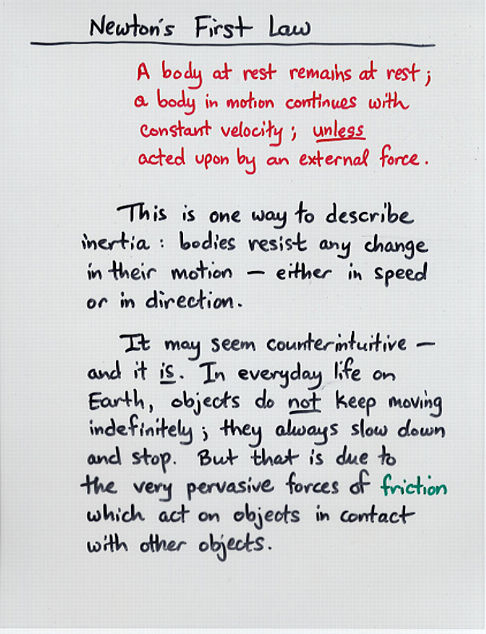
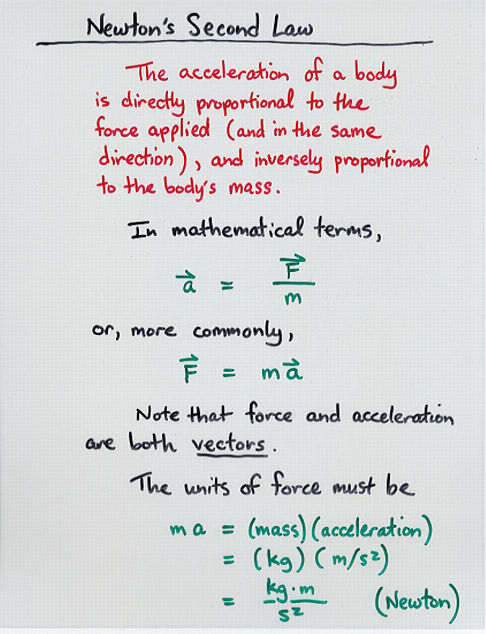
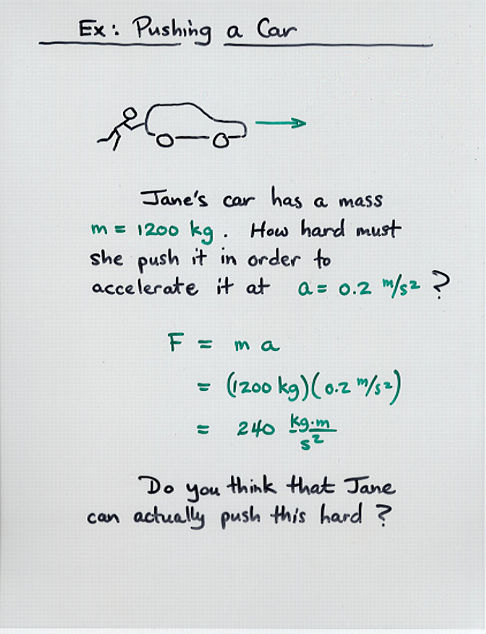
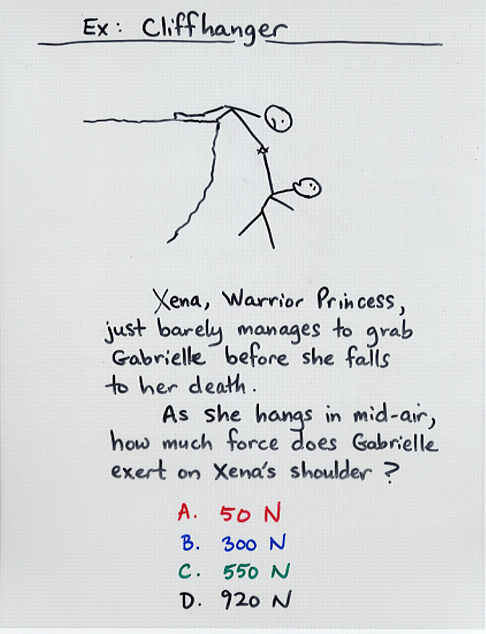
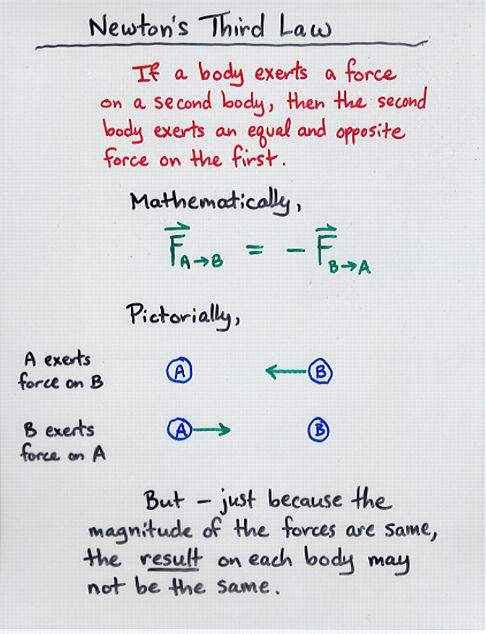
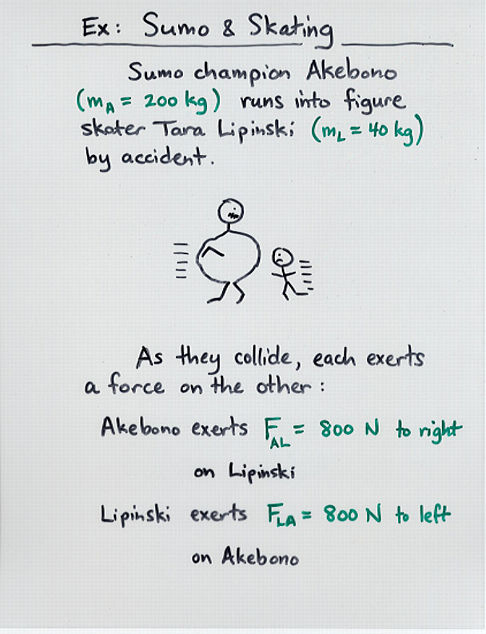
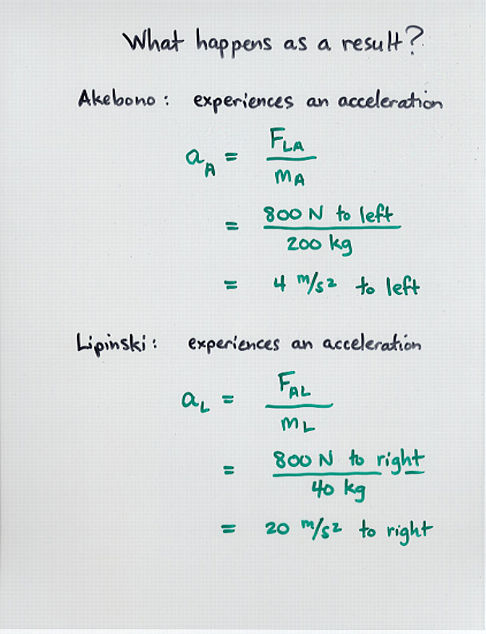
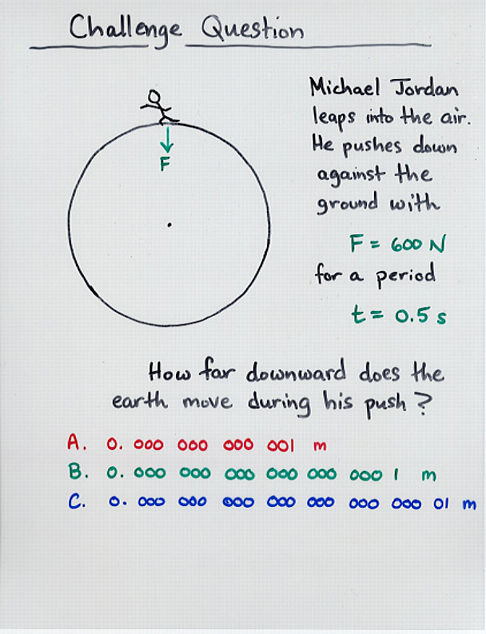
 Copyright © Michael Richmond.
This work is licensed under a Creative Commons License.
Copyright © Michael Richmond.
This work is licensed under a Creative Commons License.
A body at rest stays at rest, and a body in motion continues
in motion with constant velocity, unless some external force
acts upon it.
The acceleration of an object is directly proportional to the
force applied to it, and inversely proportional to its mass.
In other words,
F = ma
If a body exerts a force on a second body, then the second
body exerts an equal and opposite force on the first.
But note that the result of these opposing forces depends on
the mass of each body.
Viewgraphs













 Copyright © Michael Richmond.
This work is licensed under a Creative Commons License.
Copyright © Michael Richmond.
This work is licensed under a Creative Commons License.